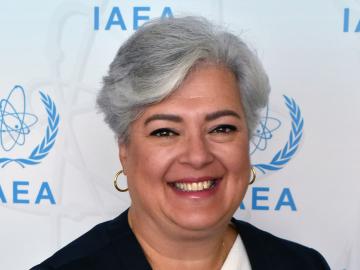
Filter News
Area of Research
- (-) National Security (25)
- (-) Supercomputing (39)
- Advanced Manufacturing (2)
- Biology and Environment (52)
- Biology and Soft Matter (1)
- Building Technologies (2)
- Clean Energy (49)
- Computational Biology (1)
- Computer Science (1)
- Electricity and Smart Grid (1)
- Functional Materials for Energy (2)
- Fusion and Fission (15)
- Isotopes (3)
- Materials (43)
- Materials for Computing (6)
- Neutron Science (14)
- Renewable Energy (1)
News Topics
- 3-D Printing/Advanced Manufacturing (1)
- Artificial Intelligence (9)
- Big Data (4)
- Bioenergy (3)
- Biology (7)
- Biomedical (4)
- Biotechnology (1)
- Buildings (3)
- Chemical Sciences (2)
- Climate Change (7)
- Computer Science (14)
- Coronavirus (4)
- Critical Materials (1)
- Cybersecurity (5)
- Decarbonization (2)
- Energy Storage (3)
- Environment (4)
- Exascale Computing (6)
- Frontier (7)
- Grid (5)
- High-Performance Computing (9)
- Machine Learning (8)
- Materials (8)
- Materials Science (5)
- Microscopy (2)
- Nanotechnology (3)
- National Security (13)
- Neutron Science (2)
- Partnerships (1)
- Physics (2)
- Quantum Computing (7)
- Quantum Science (4)
- Security (4)
- Simulation (5)
- Space Exploration (1)
- Summit (7)
- Sustainable Energy (2)
Media Contacts

In human security research, Thomaz Carvalhaes says, there are typically two perspectives: technocentric and human centric. Rather than pick just one for his work, Carvalhaes uses data from both perspectives to understand how technology impacts the lives of people.

Two years after ORNL provided a model of nearly every building in America, commercial partners are using the tool for tasks ranging from designing energy-efficient buildings and cities to linking energy efficiency to real estate value and risk.

A new paper published in Nature Communications adds further evidence to the bradykinin storm theory of COVID-19’s viral pathogenesis — a theory that was posited two years ago by a team of researchers at the Department of Energy’s Oak Ridge National Laboratory.

Though Scott Stewart recently received an Early Career Award from the Institute of Nuclear Material Management, he is regarded as a seasoned professional in the nuclear field with over 10 years of experience.

When Hurricane Maria battered Puerto Rico in 2017, winds snapped trees and destroyed homes, while heavy rains transformed streets into rivers. But after the storm passed, the human toll continued to grow as residents struggled without electricity for months. Five years later, power outages remain long and frequent.

A multi-lab research team led by ORNL's Paul Kent is developing a computer application called QMCPACK to enable precise and reliable predictions of the fundamental properties of materials critical in energy research.

Countries around the world have unique languages, cultures, food, entertainment and governments. Yet, more than 170 countries are finding common ground in an unlikely field: nuclear material and science.

Five National Quantum Information Science Research Centers are leveraging the behavior of nature at the smallest scales to develop technologies for science’s most complex problems.

Researchers at the Department of Energy’s Oak Ridge National Laboratory and their technologies have received seven 2022 R&D 100 Awards, plus special recognition for a battery-related green technology product.

When Matt McCarthy saw an opportunity for a young career scientist to influence public policy, he eagerly raised his hand.


